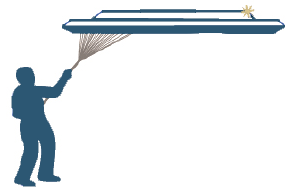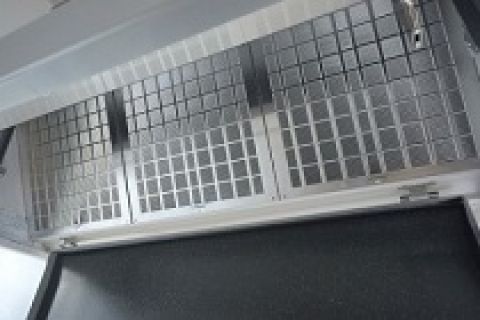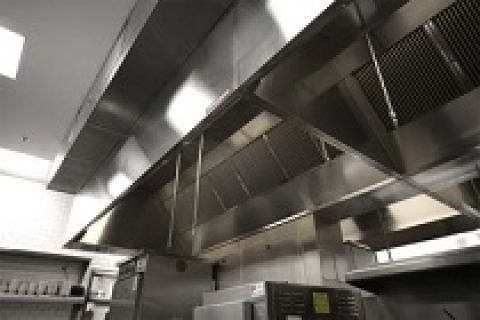Hood Cleaning: What Happens During the Process?
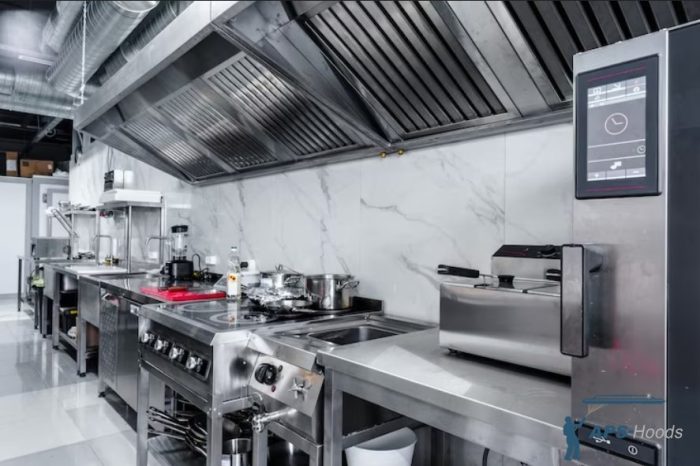
Have you ever wondered why the level of air quality, safety, efficiency, and productivity of some commercial kitchens are extremely higher than their counterparts? If you have a chance to pay a visit to the back of the house in these commercial kitchens, most probably you will find out these kitchens have adhered to a variety of regulations to operate hygienically, safely, and legally. In other words, “quality is never an accident”. Among all the regulations, regular hood cleaning and maintenance are of fundamental importance. And undoubtedly, you have to address them “regularly’” to keep your kitchen on the right path.
Just give us a call at 800-750-7313 to discuss your kitchen needs and get professional service throughout Lakewood, Aurora, Denver, and the Colorado area for maintaining your range hood
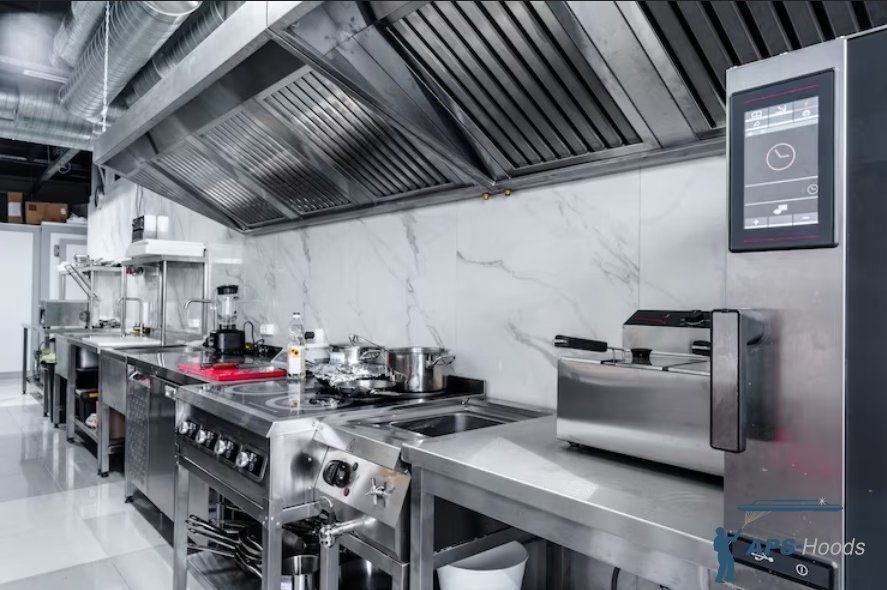
But how can we keep the ambiance of the commercial kitchens and especially extraction systems hygienic and efficient regularly? Usually, a lot of smoke, grease, debris, and odors of cooking accumulate on the surface, in range hoods and their filters as clogs, mucks, or stains. So Proper maintenance and cleaning techniques for commercial kitchen cleaning in every size; spacious or small, are essential. It helps to avoid confronting issues that show up when you least expect them. But you might wonder what exactly happens during the process of commercial hood cleaning. In this article, we deal with all the steps beginning with preparing the kitchen to ending with reassembling and providing you with a certification.
Preparing and Clearing the kitchen Area for Hood Cleaning
The well-trained technicians in APS-Hoods usually start by inspecting the exhaust system thoroughly to ensure there is nothing unusual that needs to be addressed and check whether some parts like baffle filters need to be replaced or repaired. Also, protective fire-resistant tarps and plastic wraps are used to cover nearby appliances and the floor to prevent water damage, fire hazards, and also health and safety concerns (in case the funnel fails during removal or grease splatters around).
Safety Precautions in Commercial Hood Cleaning
To adequately clean your kitchen hood, the approach being used should meet NFPA 96 standards. The National Fire Protection Association is a nonprofit organization that publishes hundreds of consensus codes and standards. They help to minimize or eliminate injury, death, and potential fire hazards to protect building occupants. To prioritize safety we should consider the following precautions:
- Disconnecting the power supply and also all appliances like the gas supply under the hood
- Putting on protective gear such as aprons, gloves, goggles, face shields, closed-toed shoes, and lab coats especially while handling dry ice and other chemicals.
- protecting all the nearby appliances and the floor. To this end, plastic wraps and protective tarps are usually used
- Constructing a funnel to direct grease and water sprayed from the pressure washer to a disposal container to prevent residue and mess from being left behind.
- Applying neutral detergents that are non-corrosive and also using non-abrasive cloths to clean the hood surface (Alcohol substances are avoided in sanitizing stainless steel surfaces in hood cleaning)
- Making sure the air is not stagnant or polluted by ensuring sufficient ventilation in the whole process of hood cleaning
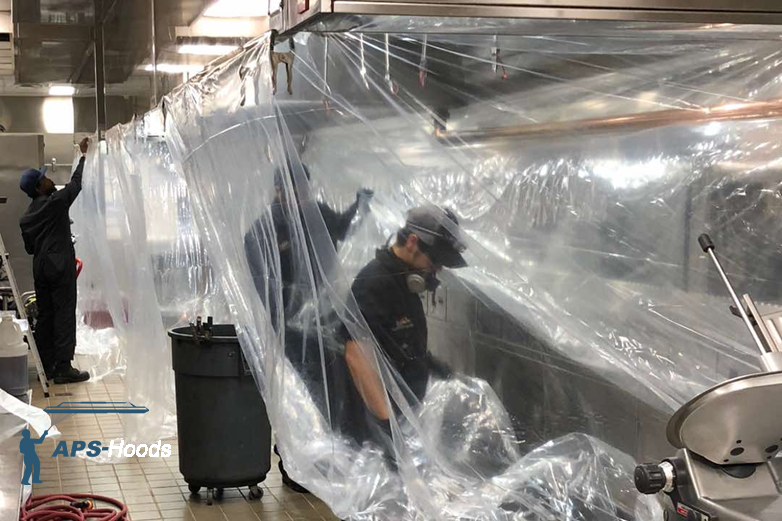
Inspection and Assessment Before Hood Cleaning
To increase the efficiency and lifespan of the exhaust system some inspections should be carried out. And in case there is a problem, it should be addressed before proceeding with the cleaning. Hood cleaning technicians usually follow these steps :
- Turning off the power supply completely from the electric panel to prevent the risk of electrocution.
- Removing the baffle filters from the hood, and setting them aside for cleaning.
- Inspecting motor and fan for any malfunction, noise, vibration, tear, or wear
- Making sure the fan blades are clean and balanced
- Checking the hood exterior and interior and using a damp cloth to wipe off any loose dirt or dust.
- Making sure the ducts are properly sealed and insulated and checking whether there are any cracks, leaks, or obstructions in the ductwork
- Inspecting all the spray heads and nozzles for any corrosion, misalignment, or blockage and checking whether they are pointing directly at the right appliance
- Ensuring the tamper indicator is intact and secure and there is no sign of damage or tampering
- Inspecting the system gauges to make sure they are green and in operable range, and also there aren’t any abnormal indicators or readings
Contact APS-Hoods for a free quote
Identifying Areas of Grease Buildup
It is crucial to identify the areas of grease buildup since it might pose fire hazards and other issues related to health and safety. Moreover, it will help to determine which method of hood cleaning works best. So, inspecting all the surfaces and equipment in the kitchen for accumulated grease is essential. These places include:
The Hood:
It is the metal canopy that is above the cooking appliances and helps to vent out, filter, or capture the cooking grease. Since it is mounted directly above the cooktop, it is usually coated with grease and dirt after a while. That is exactly when the need for hood cleaning comes in since it can lead to fire hazards.
The Fan and Motor:
This is the part that moves the air from the hood to the ductwork and creates suction. A contaminated fan or motor usually leads to noise, vibration, tear and wear, or malfunction.
The Filters:
These baffle plates and metal mesh are inside the hood and they trap the grease particles and prevent them from entering into the ductwork. If these filters become clogged with debris and grease, it can affect the ventilation and airflow in the kitchen.
The Ductwork
This network of pipes connects the hood to the exhaust system. Usually, ductwork has grease buildup at horizontal sections, bends, joints, and walls. Therefore, it will affect the performance and also can create cracks, leaks, or obstructions.
The System Gauge
This system consists of instruments to measure and display the temperature, flow rate, pressure, or other indicators. Due to the grease buildup or damage in its components, it can have abnormal readings or indicators.
The Tamper Indicator
The tamper indicator shows if the hood system has been opened or accessed by unauthorized personnel. Due to grease buildup or vandalism, it can have signs of tampering or damage.
The Nozzles and Spray Heads
For spraying water or chemicals in the process of hood cleaning, technicians use various nozzles and sprays. But gradually nozzles and spray heads can become blocked, misaligned, or corroded by dirt or grease, and therefore reduce their effectiveness and coverage.
Safety First: Assessing Potential Fire Hazards
It’s of the utmost importance to assess the potential fire hazards before hood cleaning. Some of the common fire hazards in commercial kitchens that can cause fire are grease buildups, electrical faults, combustible materials, and human errors. We recommend following some steps for assessing the fire hazards before hood cleaning. Such as:
• Inspecting the hood system for any signs of grease or dirt accumulation
• Checking the electrical system for any defects or damages
• Removing any combustible materials from the kitchen area
• Educating and training the staff and customers on fire safety rules and practices
Disassembly of Hood Components
For deep cleaning of range hoods, it needs to take apart the main parts of the hood system which involves the following steps:
• Removing filters and grease traps: To remove these metal mesh or baffle plates we need to turn off the power supply from the electric panel. Then we can safely unlock the latches or filter clips and slide out the grease traps and filters to clean or replace them later.
• Dismantling exhaust fans: To dismantle the motor, fan blade, and housing in the exhaust fan, first we need to turn off the power supply. Then technicians disconnect the wiring and remove the screws and bolts and pull out the fan assembly.
• Detaching ductwork: After turning off the power, hood cleaning technicians loosen the clamps or fasteners of duct sections, and then separate each part carefully.
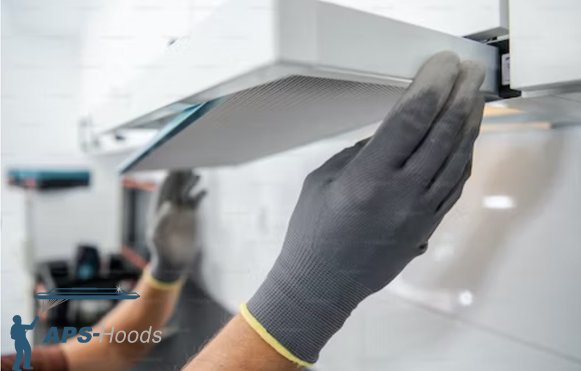
Cleaning Solutions and Equipment in Commercial Hood Cleaning
The number one objective of range hood cleaning is to eliminate fire hazards. So, it is crucial to use supplies, materials, and methods that can remove dirt and grease efficiently while they are not toxic to our health or the environment. Such as:
• Appropriate cleaning agents: To break down or dissolve the grease and other contaminants from the hood surfaces and its components some compatible chemicals are used (which were approved by the hood manufacturer). Liquid degreasers, enzyme cleaners, and alkaline cleaners are some examples of cleaning agents.
• High-pressure hot water cleaning: This method involves spraying hot water at high pressure to remove grease and dirt from the hood, motor, fan, filters, and ductwork. To enhance effectiveness, technicians employ both steam cleaning and pressure washing In the process. Hood cleaning technicians can execute it whether manually or automatically, but for sure carefully. Because they have to avoid damaging the hood system or causing water leaks.
• Scraping and degreasing techniques: To remove dirt and grease manually (but gently), hood cleaning technicians use tools such as brushes, cloths, scrapers, and pads. After that, they rinse and wipe the surface with clean water and cloth.
Cleaning the Hood System
This step involves a series of actions. First, scrubbing and degreasing the hood interior with hot water, a pressure washer, and a degreasing agent takes place. Hood cleaning technicians thoroughly rinse and dry the hood interior afterward. Then They turn to cleaning exhaust fans and blades. To clean it with a brush and degreaser, technicians remove the fan from the ductwork. Also, they wash filters and grease traps by soaking them in hot water and a degreaser solution. Then they scrub the filters with a brush and finally rinse them with clean water.
Clearing and Maintenance of Ductwork in Hood Cleaning
This step should be done in conjunction with hood cleaning since both are interrelated and can affect each other. It typically involves these three Steps which are carried out by professional and licensed hood cleaning technicians:
- Removing grease buildup in ducts: This involves scraping the grease from the inside of the duct by using hot water, a pressure washer, and a degreaser.
- Clearing blockages and debris: Hood cleaning technicians inspect the duct for any foreign objects and obstructions because it might hinder the airflow and lead to major damage. They usually use a brush, a vacuum, or a rod to remove the debris or blockages.
- Inspecting for damage or leaks: Any holes, cracks, or loose connections might lead to contaminants entering or allowing air to escape. So, it’s the hood cleaning technicians’ responsibility to check for any likely damages and consider repairing or replacing them before reassembling.
Reassembly, Final Inspection, Certification and Compliance
Finally, hood cleaning technicians reattach the hood components and check the exhaust system for proper alignment, connections, and functionality. In our professional hood cleaning service, we will provide you with a detailed report of our work to ensure you the exhaust system meets the fire safety requirements and other standards as specified by NFPA 96. Moreover, you will get a certificate of completion that indicates the exact time and date of the hood cleaning service to schedule regular inspections. This certification and compliance is essential since it can protect the owner from penalties, potential fines, lawsuits, or closure due to fire hazard violations.
FAQs: Is There Anything Else You Want to Know about Hood Cleaning?
What are the risks of not cleaning my exhaust hood regularly?
Fines and closure, fire hazards, poor air quality, reduced equipment performance, etc.
How likely would it be to damage or contaminate other kitchen equipment and appliances at the time of hood cleaning?
It depends on the technicians’ efficiency, professionalism, and being certified in performing hood cleaning and following the standards.
I haven’t had my kitchen exhaust cleaned for a long time. Does hood cleaning work for my case?
To meet the NFPA 96 standards, we will thoroughly clean your entire Kitchen Exhaust Hood. However, if your system has been neglected for a long time, it may require more than one cleaning to comply.
How often should I clean my exhaust hood?
It varies depending on how much and what kind of cooking you do in your kitchen. For instance, you need to clean your hood every month if you use solid fuel for cooking, but you can do it once a year if you cook less often.
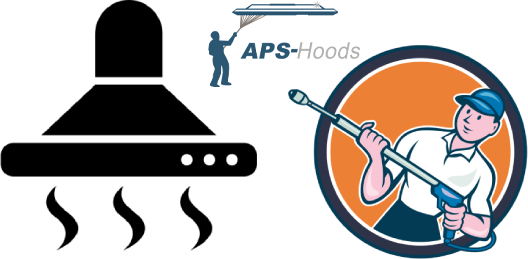
Benefits of Regular Hood Cleaning and Range Hoods
Range hoods enable you to get rid of airborne grease before it settles everywhere and extend the lifespan of kitchen equipment. Also, they prevent fire hazards, carbon monoxide poisoning, or other issues caused by poor ventilation. Furthermore, they perfectly illuminate your cooktop which leads to enhancing the visibility of the cooking process and also creating an inviting and warm atmosphere. Yet, a greasy range hood can create an explosive environment, reduce the air quality, and also employees may suffer from lower productivity. Therefore, it is essential to regularly clean the interior and exterior of your range hood. Just give APS-Hoods a call for a free estimate on your commercial kitchen hood Cleaning & kitchen exhaust cleaning needs. Then experience the difference of a fresh, clean, and safe kitchen environment with our professional hood cleaning service.
Contact Us

